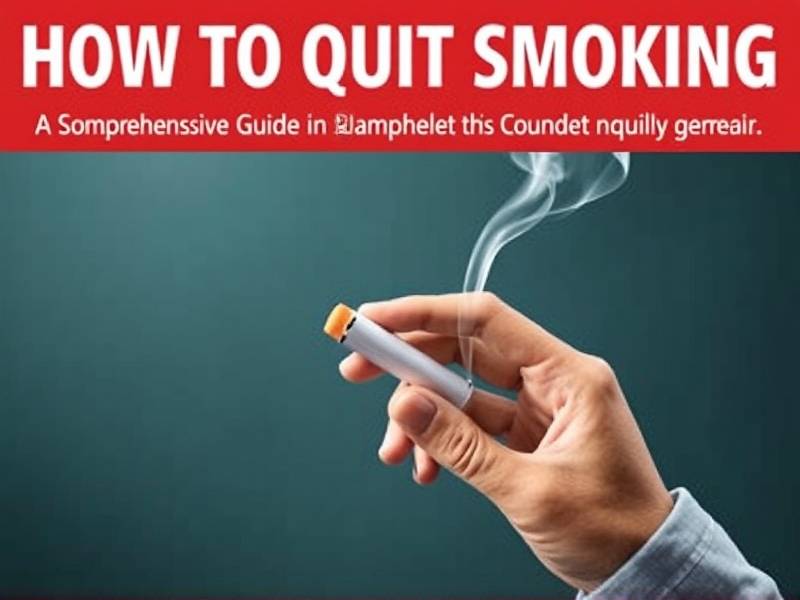How to Quit Smoking: A Comprehensive Guide in Pamphlet Format
Introduction
Quitting smoking is a significant step towards improving your health and well-being. This comprehensive guide is designed to provide you with essential information and practical strategies to help you quit smoking successfully. Whether you're just starting your journey or looking for ways to reinforce your commitment, this pamphlet aims to support you every step of the way.
Understanding the Challenge
Why Quit?
Smoking is a leading cause of preventable deaths worldwide. It increases the risk of numerous health issues, including heart disease, stroke, cancer, and respiratory diseases. Quitting smoking can significantly improve your quality of life and reduce these risks.
The Science Behind Nicotine
Nicotine, the primary addictive substance in cigarettes, affects the brain's reward system. This creates a physical and psychological dependence that makes quitting challenging. Understanding this science can help you develop effective strategies.

Preparing for Your Quit Date
Setting a Realistic Goal
Choose a quit date that is realistic and manageable for you. It's often recommended to pick a day when you have minimal stress or responsibilities.
Gathering Resources
Collect tools that can aid your quit journey, such as nicotine replacement therapy (NRT), prescription medications, or support groups.
Strategies for Quitting Smoking
Nicotine Replacement Therapy (NRT)
NRT includes products like patches, gum, lozenges, inhalers, and nasal sprays. These provide controlled amounts of nicotine without the harmful chemicals found in cigarettes.

Prescription Medications
Medications like varenicline (Chantix) or bupropion (Zyban) can help reduce cravings and withdrawal symptoms by affecting the brain's nicotine receptors.
Behavioral Strategies
Behavioral changes are crucial for long-term success:
- Identify Triggers: Recognize situations that make you want to smoke and plan how to cope with them.
- Develop Coping Skills: Learn alternative ways to deal with stress or boredom.
- Reward Yourself: Set milestones and reward yourself for each one achieved.
Support Systems
Seek Professional Help
Consult with healthcare professionals who specialize in addiction treatment for personalized advice and support.
Join Support Groups
Support groups provide a community of people going through similar experiences. Online forums can be particularly helpful if face-to-face meetings are not an option.
Overcoming Common Challenges
Dealing with Cravings
Cravings are normal during withdrawal but usually diminish over time. Techniques like deep breathing or mindfulness can help manage them.
Handling Withdrawal Symptoms
Withdrawal symptoms include irritability, anxiety, headaches, and insomnia. NRT or prescription medications can alleviate these symptoms.
Staying Smoke-Free Long-Term
Maintain Your New Habits
Replace smoking triggers with healthy alternatives like exercise or hobbies.
Monitor Your Progress
Keep track of your progress and celebrate successes along the way.
Avoid Relapse Triggers
Stay aware of situations that may lead to relapse and plan accordingly.
Conclusion
Quitting smoking is a challenging but rewarding process. By understanding the science behind addiction, preparing effectively, using various strategies, seeking support when needed, and maintaining commitment over time, you can successfully break free from the chains of tobacco dependence. Remember that every attempt brings you closer to being smoke-free – don't give up!
For more information on quitting smoking resources available in your area or online support options, visit reputable health websites such as Healthline or Mayo Clinic.
